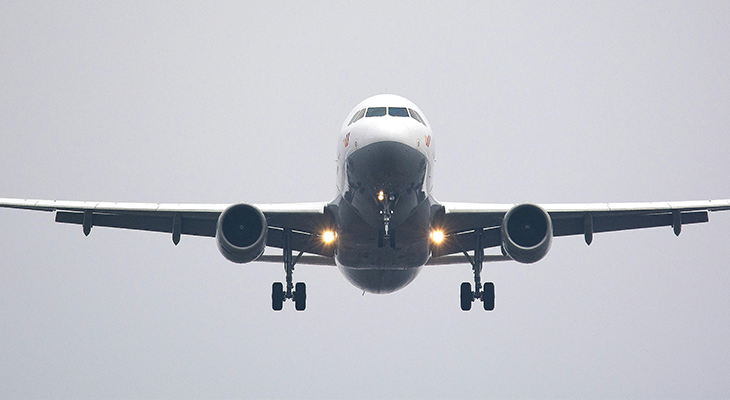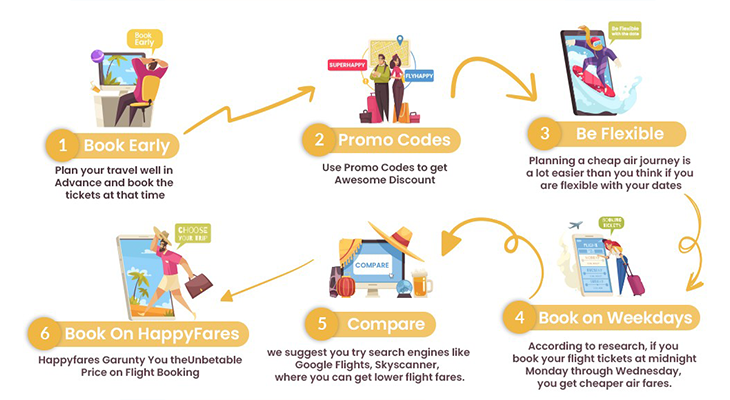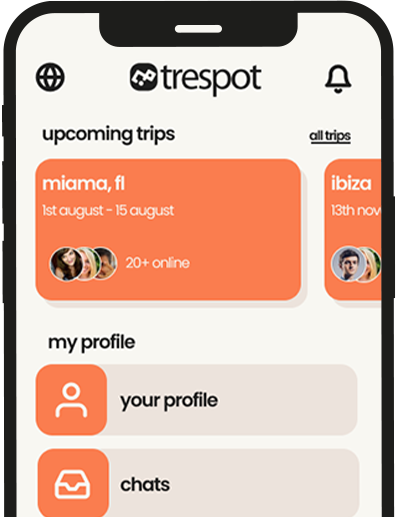Introduction: Why “Cheap Travel Tips” Matter in 2025
Prices for flights, accommodation, and on-the-ground experiences have climbed in recent years — but you can still travel well on a budget if you stack the right strategies: flexible flight searches, smart accommodation choices (hostels, apartments, housesitting), automated saving, and leveraging points/miles the simple way. In this guide, you’ll get actionable, field-tested cheap travel tips tailored for budget-conscious travelers, explorers, and travel communities. We’ll show you how to cut 20–50% off common trip line items without sucking the fun out of your vacation. Let’s stretch every rupee/dollar/euro so you can take more trips, stay longer, and meet more people.
1) Set a Real Budget (and a “Buffer”): Know Your Numbers
Most travelers overspend because they only price flights and hotels — then get blindsided by local transport, activities, data SIMs, baggage fees, resort fees, ATM charges, and dynamic currency conversion (DCC). Start with a category budget (Flights / Stay / Food / Transport / Activities / Misc) plus a 10–15% “Oh-no” buffer.
The 50/30/20 Trip Split
- 50% core logistics (flights, stays, intercity moves)
- 30% experiences (tours, museums, local activities)
- 20% food + misc + emergency buffer
Track it with a Google Sheet or budgeting app, and reconcile daily (3 minutes tops). This small routine prevents big surprises.
2) Flights: Flexibility, Tools, and Tactics That Actually Work
Be date-flexible and destination-flexible. Use “Everywhere / Anytime” searches (Google Flights Explore, Skyscanner) to catch anomaly fares. Set price alerts, watch fare calendars, and jump on deals when your automation pings you.
Practical Tactics
- Set price alerts & watch fare calendars months out for international trips.
- Fly midweek (often Tue/Wed) and at awkward times to catch lower fares.
- Split tickets / creative routing carefully if it significantly reduces the total fare.
- Use stopover programs to see an extra country for free or cheap.
- Redeem points when cash prices surge, especially via bank portals or flexible currencies.

Unique insight: Calculate your hourly savings. If shifting your trip by 2 days saves ₹12,000 but costs two extra hostel nights at ₹2,000 each, you still net ₹8,000 saved — a no-brainer.
3) Accommodation: Hostels, Housesitting, and Hidden Discounts
Choose stays that suit your budget + cooking plans. Big hostel dorms are the cheapest, but capsule hotels can be private and still budget-friendly. Consider housesitting (TrustedHousesitters, Nomador) to reduce accommodation cost to zero.
Accommodation Levers
- Long-stay discounts (weekly or monthly on Airbnb/Booking) — message hosts to negotiate.
- University dorms & religious guesthouses as under-the-radar cheap options.
- City cards sometimes bundle discounted partner hotels/hostels — check before booking.
Unique insight: Compute your “cost per kitchen”: a slightly pricier stay with a kitchen can reduce your overall spend if you cook 50% of your meals.
4) Food: Eat Like a Local, Cook When You Can, Track the Sneaky Costs
Street food, markets, and grocery runs are your wallet’s best friends. Lunch > Dinner (cheaper fixed menus). Use dining deal apps like Too Good To Go, TheFork/Tastecard to slash bills by 30–50%.
- Cook breakfasts & some dinners, eat local for lunch.
- Skip the beverage drain: water bottles, fancy coffees, bar tabs add up.
- Picnic in public parks & waterfronts for a cheap, social vibe.
Unique insight: Set a daily food cap (e.g., ₹1,300/day in many Asian cities). If you keep busting it, adjust early and reallocate from non-essentials.
5) Ground Transport: Public Transit, Rideshares, and Walkable Itineraries
Public transit almost always wins on cost — and city cards often bundle it with attractions. Plan walkable clusters of attractions to slash intra-city transport costs.
- Night buses/trains can save a night’s accommodation (weigh comfort/safety).
- Rideshares for groups (3–4 people) can be cost-effective vs. metro + time lost.
- Bike/scooter shares often cheapest for mid-distance trips.
Unique insight: Map your mobility budget by km — if you’ll move 40–60 km, a flat-price metro card might beat pay-per-ride.
6) Travel Rewards, Points & Miles: Build a Simple, High-ROI Stack
You don’t have to be a hardcore hacker. One or two good travel rewards cards, a flexible points currency, and a cash-back portal will carry most budget travelers.
- Pick 1 flexible currency (bank points that transfer to multiple airlines/hotels).
- Earn on everything (flights, hotels, tours) via portals for extra multipliers.
- Redeem when cash prices surge (e.g., >1.5–2.0 cpp thresholds).
- Consider fixed-value travel cards if you hate award charts.
- Track annual fees vs. perks (lounges, credits, trip delay insurance).
Unique insight: Run a hybrid budget: cash for cheap legs, points for expensive ones to stabilize your total trip cost.
7) Micro‑Saving & Micro‑Investing: Automate Your Travel Fund
Round-up apps (micro‑investing) can turn spare change into airfare over months. Pair this with a weekly auto-debit to your “Travel ETF” or high-yield savings account.
- Name the account “Flights to X” — labels increase follow-through.
- Sweep cashback/points cash-outs into the same pot monthly.
Unique insight: Link price alerts to your travel fund — when the alert fires, the money’s already there.
8) Travel Timing: Shoulder Seasons, Weekday Flying & Off-Peak Cities
Off-peak travel slashes flight and hotel costs. Opt for shoulder seasons, midweek flights and stays, and lower-profile but equally awesome cities.
- Track currency swings — strong home currency = cheaper on-ground spend.
- Swap A-list cities for B/C-tier gems: Porto > Lisbon, Penang > Singapore, Puebla > CDMX.
Unique insight: Build a destination substitution matrix (2–3 alternates for every dream destination) with similar vibes but lower costs.
9) Free (or Nearly Free) Things To Do: Museums, Nature, City Cards
Free museum days, walking tours, hiking trails, public beaches, festivals, and city cards (bundling key sites + transit) can cap your activity costs.
Unique insight: Front-load free activities on arrival — it sets a low mental anchor for what you expect to spend for the rest of the trip.
10) Technology Stack: Apps & Extensions That Save You Real Money
- Flights: Google Flights, Skyscanner, Hopper
- Food Deals: Too Good To Go, TheFork/Tastecard
- Transit & Maps: Citymapper, Rome2rio
- Budgeting: Trail Wallet, Spendee, YNAB
- Accommodation: Hostelworld, Booking, TrustedHousesitters, Couchsurfing
- Cashback & Coupons: Rakuten, Honey (for gear before you go)
Unique insight: Automate the boring bits (alerts, round-ups, weekly transfers) so you can focus on experiences, not spreadsheets.
11) Travel Insurance & Risk Management on a Budget
A medical emergency can vaporize your savings. Many rewards cards include trip delay/cancellation coverage; otherwise, grab a basic policy that covers medical + evacuation, especially for long or international trips.
12) Avoid the Hidden Fees: DCC, ATM Charges, Roaming & Resort Fees
- Pay in local currency to dodge DCC markups.
- Use fee-free ATM cards or those that reimburse foreign fees.
- Buy a local SIM/eSIM — usually cheaper than roaming.
- Compare total stay cost (taxes, resort fees, cleaning fees) before booking.
13) Slow Travel & Geoarbitrage: Spend Less by Moving Less
Transport days are expensive days: taxis, snacks, surcharges, and time lost. Slow travel lowers intercity fares, unlocks weekly/monthly discounts, and lets you learn local hacks. Many travelers still rate Southeast Asia and Argentina as top value in 2025.
14) Case Study: How a 10‑Day Europe Trip Can Drop ~35% in Cost
| Line Item | Scenario A (Standard) | Scenario B (Optimized) |
|---|---|---|
| RT Flight | ₹65,000 | ₹50,000 |
| Stay (10 nights) | ₹90,000 (3★) | ₹55,000 (Hostel/private + long-stay deals) |
| Food | ₹20,000 (₹2,000/day) | ₹13,000 (₹1,300/day w/markets + cooking) |
| Transit + Activities | ₹20,000 | ₹12,000 (City card + public transit) |
| Total | ₹195,000 | ₹130,000 (~‑33%) |
Custom Visuals You Can Add

- “Flight Flexibility Triangle” infographic — dates, destination, and airport flexibility intersect to reveal the cheapest fares.
- “Cost per Day Breakdown Wheel” — donut chart showing Flights / Stay / Food / Transport / Activities / Buffer.
- “Save vs. Spend Decision Tree” — choose between paying cash vs. redeeming points, then invest the difference via micro‑investing if you pay cash.
Quick Takeaways
- Flexibility beats everything for cheap flights and stays.
- Automate savings (round-ups, weekly transfers) so you’re ready when deals hit.
- Cook some meals & use public transit — fast way to chop 20–40% off daily costs.
- Use city cards & free museum days to cap attraction costs.
- Slow travel compounds savings: fewer moves, deeper discounts, more local knowledge.
- Watch hidden fees (DCC, ATM, roaming, resort fees) — tiny percentages add up.
Conclusion
Travel doesn’t have to be expensive — it has to be intentional. If you plan with a real budget and buffer, stay flexible on flights and destinations, pick accommodation and food strategies that fit your style, and automate your savings while leveraging points smartly, you can travel more often, longer, and with far less financial stress.
Now it’s your turn: pick your next destination, set your alerts, and automate a weekly transfer today. If you’re part of a travel community on Trespot, share this guide in your chatroom — the more your circle optimizes, the more group trips you’ll actually take together.
FAQs - Cheap Travel Tips
Flexibility — search multiple dates and nearby airports, and set fare alerts to pounce when prices dip. Flying midweek often helps too.
Usually, yes — especially in large dorms. If you value privacy, consider capsule hotels or private rooms in hostels.
Eat where locals eat, prioritize lunch specials, snack from markets, and cook some meals. Use discount dining apps for deeper savings.
Yes, if fees are low and you like “set it & forget it” saving. Pair it with price alerts so you’re ready to buy when deals hit.
Many travelers still rate Southeast Asia and parts of Latin America (e.g., Argentina) as high-value for flights, food, and stays.
References
- Nomadic Matt — Budget travel & how to travel for cheap/free
- NerdWallet — Easy money-saving travel tips
- Fidelity — Budget travel guidance & saving strategies
- Investopedia — Micro‑investing apps for travelers
- MoneyLion — 2025 budget travel tips
- That Travelista — Beginner’s guide to budget travel
- Travel Noire — Travel more & spend less
- Under30Experiences — Tips for traveling cheap
- Reddit r/TravelHacks — Community insights on cheap stays & value regions
- Digital Travel Academy — Secret strategies for budgeting on trips
- The Sun — Europe’s cheapest family holidays analysis
Note: We synthesized overlapping advice across multiple reputable travel finance and budget sources to give you a single, deeply practical playbook.



